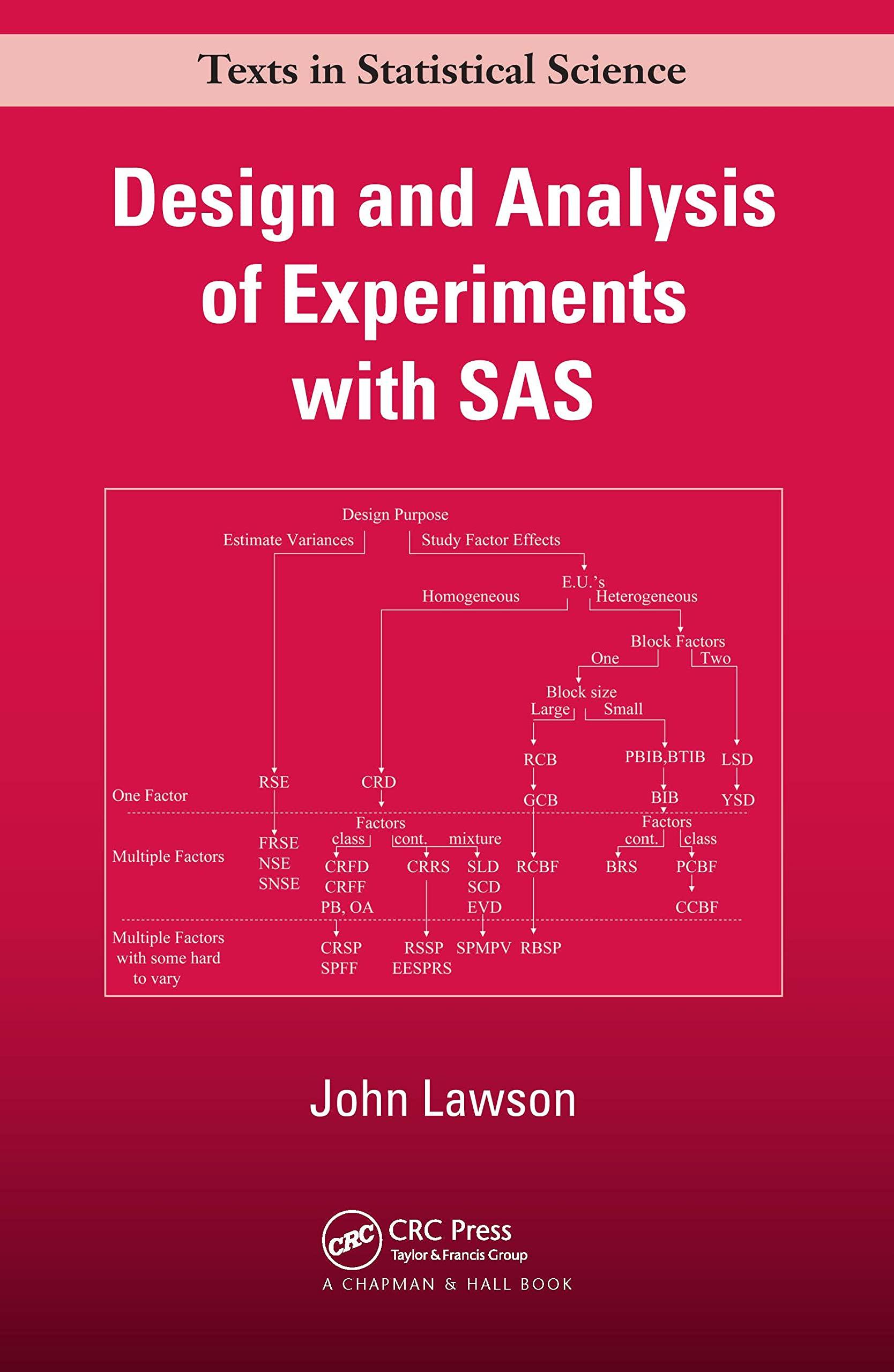3. Lawson (1990) describes an experiment in a chemical process with the aim of producing less byproduct
Question:
3. Lawson (1990) describes an experiment in a chemical process with the aim of producing less byproduct tars. The control factors were A, reaction temperature; B, catalyst concentration; and C, excess of reagent 1. The noise factors were E, purity of the recycled solvent; and D, purity of reagent 1 that comes from a supplier. A product-array design was used for the experiment that is shown in Table 12.19. The control-factor array is a Box-
Behnken design that will allow estimation of all terms in a full quadratic model involving factors A, B and C. The noise factor array is a 22 factorial.
(a) What interactions are estimable in this design?
(b) Analyze the data using the response modeling method. Are there any interactions between control and noise factors that would allow you to reduce or nullify the eect of uncontrollable variability in the purity of the solvent stream and purity of reagent 1?
(c) Reanalyze the data using the location-dispersion modeling method. Do you reach the same conclusions about optimal settings of the control factors? Is any information lost in analyzing the data in this way?
(d) Explain how the response modeling analysis would change if this exper-
iment had been conducted as a split-plot design, where the noise factors were the whole-plot factors and the control factors were the sub-plot factors? Is there any advantage to running a product array split-plot de-
sign with the noise factors as the whole-plot factors, rather than having the control factors as the whole-plot factors as in the Ina tile example presented in Section 12.3?

Step by Step Answer:






